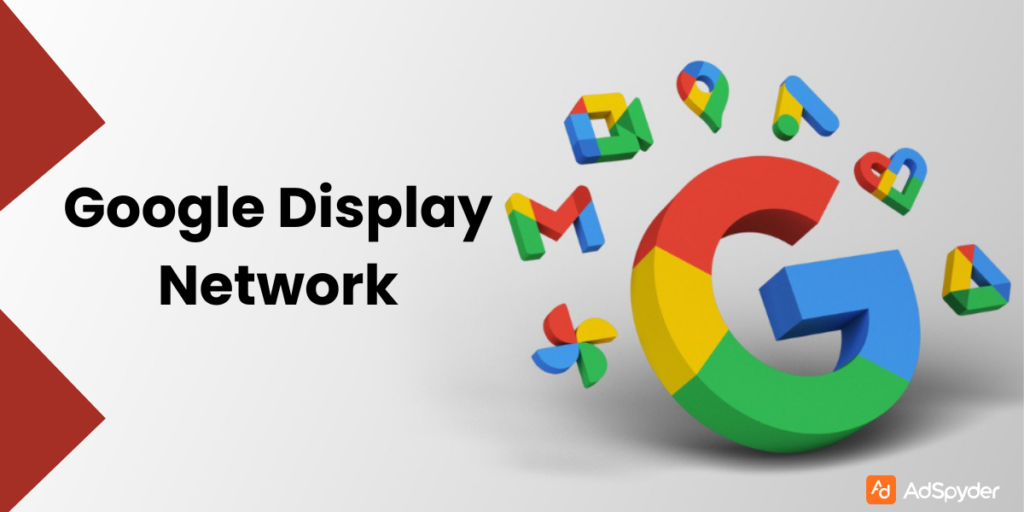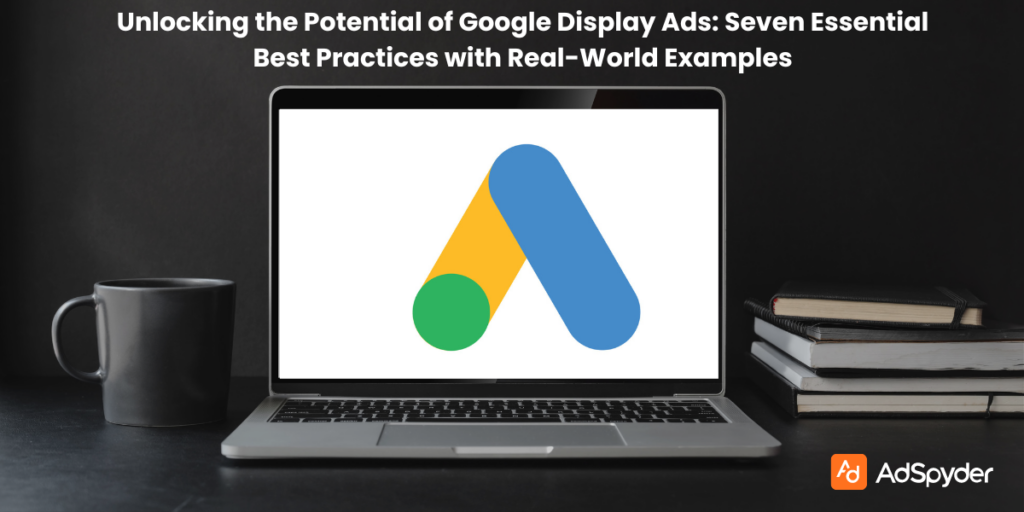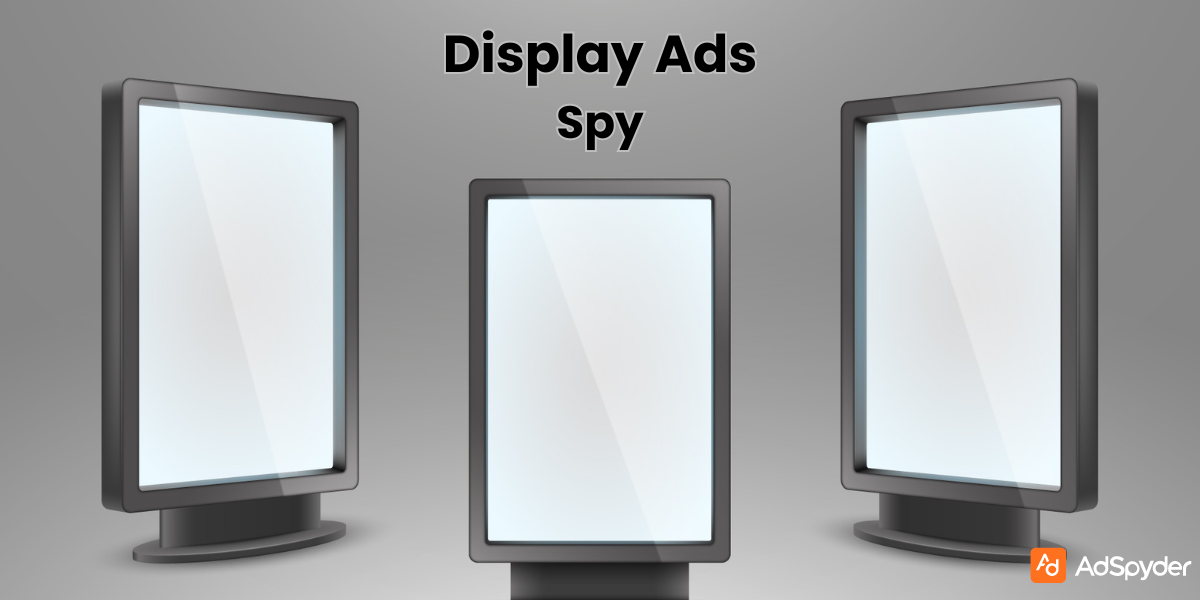Are you struggling to get your brand noticed amidst the digital noise? Well, that’s the case with almost everyone. Many businesses pour funds into online advertising but don’t see the results they crave. The Google Display Network holds a treasure trove of potential that is yet to be explored. Mastering Google Display Ads best practices can significantly contribute to your marketing efforts, reaching millions with eye-catching designs and precisely targeted messaging. This guide is your map to hidden gems in display advertising—we provide seven best practices backed by real-world examples to supercharge your campaigns. Ready for more clicks and conversions? Dive deep into these pro tips for success.
Understanding the Google Display Network (GDN)

The Google Display Network (GDN) serves as an expansive stage for your Google Display Ads. Here you can captivate audiences across the digital landscape.
- Consider it a vast canvas—the GDN spreads your message on countless sites and apps, making sure no corner of the online world is beyond reach.
- Your advertisement could pop up while someone is reading a blog post, watching a YouTube video, or checking their Gmail account.
- With smart targeting options that dig into user interests and browsing habits, GDN helps tailor your advertising efforts like never before.
- It pinpoints people who are most likely to be interested in what you’re offering, ensuring your ads don’t just get seen—they get noticed by the right eyes at the right time.
The Scope and Reach of Google AdWords Display Network
Imagine your ad popping up while someone is catching up on their favorite blog, or even as they check the latest video from a YouTuber they follow. That’s the power you harness with Google AdWords Display Network (GDN).
- Your business gets visibility in front of users across a vast array of digital touchpoints. This network blankets over two million sites and reaches over 90% of internet users worldwide.
- Whether people are scrolling through articles on news websites, watching videos, or checking emails, your display ads can be right there to greet them.
- With GDN, tailoring your reach becomes simple and effective thanks to custom segments. These segments allow for precise targeting that goes way beyond basic demographics.
- You’re not just shooting ads into cyberspace hoping they stick; you’re launching them like guided missiles straight toward potential customers interested in what you offer.
- Target by specific keywords people search for, the types of apps they use, or even based on their previous location check-ins.
Display campaign strategies benefit significantly from this kind of targeted approach because it means every dollar you spend is more likely to connect with someone genuinely interested in your product or service. With such widespread coverage and nuanced targeting capabilities at your disposal, it’s easy to see why savvy marketers make Google Display Network advertising a cornerstone in their online strategy toolkit.
The Importance of Google Display Network Advertising in Modern Marketing
Understanding the vast scope of Google AdWords Display Network (GDN) leads us naturally to its crucial role in shaping today’s advertising strategies.
- The Google GDN acts as a powerful tool, enabling you to place your ads in front of users not actively searching but are still within your market demographic.
- Leveraging GDN, you can boost brand visibility significantly, since these ads have the potential to surface on an expansive array of websites and digital properties that millions frequent daily.
- Engaging with consumers where they spend their time online is a cornerstone of effective modern marketing. With Google Responsive Display Ads, businesses can craft adaptable and visually appealing messages suited for every screen size and device.
- This flexibility ensures that whether someone is watching a video on YouTube or checking emails in Gmail, there are opportunities for brands to make meaningful connections through targeted advertising efforts.
Embracing this critical aspect of digital marketing positions companies at the forefront of consumer engagement, enhancing the likelihood of converting casual browsers into loyal customers.
Check out: How to setup conversion tracking in Google
Best Practice 1: Target Audience Precision

To unlock the potential of Google Display Ads, you must prioritize target audience precision. This involves identifying and understanding your specific audience segments to tailor your ads effectively.
- By utilizing precise targeting, you can attract prospects who are most likely to engage with your ads and convert them into customers.
- Google Display Ads provides a powerful platform for reaching diverse audience segments. With the ability to create multiple responsive sets, you can effectively target different demographics, interests, or behaviors within your overall audience.
- This approach not only increases brand awareness but also allows for strategic remarketing efforts tailored to each segment’s unique characteristics and preferences.
Identifying and Understanding Your Target Audience
After delving into precision targeting in the previous section, it’s imperative to focus on identifying and understanding your target audience for successful Google Display Ads.
- To maximize ad effectiveness, analyze customer demographics, behavior patterns, and interests that align with your products or services.
- Utilize data from digital platforms to segment your audience effectively. Understanding how potential customers interact with online content can refine your approach to creating engaging ads that resonate with them.
- Research their preferences and online habits to tailor messaging that speaks directly to their needs and desires.
By doing so, you’ll be better equipped to optimize your campaigns for improved engagement and conversions.
Example: Effective Audience Targeting in a Google Display Campaign
Suppose that you have a new mobile phone that you are trying to sell. It makes sense to target those people who are already thinking about buying a new phone.
- When you focus on in-market audiences, it means you are targeting people who are already interested in making a purchase.
- With that said, you can hence use a remarketing strategy. Let’s say someone visited your website and did not make a purchase. With remarketing, you can display those ads to them, sparking their interest and reminding them about your brand.
Best Practice 2: Creative Excellence in Ad Design
Designing display ads that are visually appealing and attention-grabbing can significantly impact their performance.
- Incorporating eye-catching imagery, compelling copy, and a clear call-to-action will attract users’ attention and encourage them to engage with the ad.
- Including relevant product images or lifestyle shots alongside persuasive text increases the likelihood of capturing the audience’s interest.
- Leveraging striking visuals combined with concise yet impactful messaging is essential for creating effective display ads.
- Moreover, ensuring that the ad design aligns with your brand’s aesthetics and values reinforces brand identity and fosters brand recall among potential customers.
By implementing these creative elements in your display ad design, you enhance the overall effectiveness of your advertising efforts on the Google Display Network.
Designing Impactful and Engaging Google Display Ads
To ensure that your display ads leave a lasting impression, focus on optimizing the design and visual elements to communicate clearly with potential customers.
- Incorporate text and ad groups to make your display ads more effective and engaging.
- Utilize clear and compelling headlines and text to grab the attention of your audience, along with prices, promotions, and exclusives to entice potential customers.
- Making your display ads high-contrast will help them stand out on websites with dark text.
- Furthermore, support your message with a thoughtful design as simply looking beautiful isn’t the sole purpose of your display ads.
- A well-designed Google Display Ad should not only be visually appealing but also effectively convey the intended message to the target audience in an engaging manner.
By focusing on these key elements of ad design, you can create impactful Google Display Ads that resonate with potential customers.
Example: A Google Responsive Display Ads
As an online marketing tool, the Google Responsive Display Ads to promote the delivery options of a food delivery service is a clear choice.
- These ads serve as an ideal medium to showcase alluring visuals of different dishes and this way, they grab the attention of the target customers who are looking for quick snacks.
- We can target consumers who are already in the prime mindset of discovering food options by placing the ads on food-related websites and apps.
- The use of high-definition visualizations and clear calls-to-action makes these ads extremely effective in terms of driving engagement and conversions of customers.
- The succulent pictures of diverse dishes not only awaken the senses but also intensify the desire for the presented meals.
- Additionally, the strong call-to-action encourages users to do certain things like placing an order or reviewing the menu in more detail.
Best Practice 3: Optimal Ad Placement and Context
Selecting the right ad placements on the Google Display Network (GDN) is crucial for maximizing your ad’s visibility.
- Consider using a combination of contextual targeting and placement targeting to ensure that your ads appear in relevant contexts and alongside suitable content.
- By strategically placing your ads where they are most likely to capture the attention of your target audience, you can increase the effectiveness of your display advertising efforts.
- To achieve optimal ad placement and context, take advantage of GDN features such as managed placements, topics, keywords, and demographics targeting. This will enable you to refine your audience reach while aligning with specific website content or user interests.
- It’s essential to continuously monitor performance metrics to evaluate the impact of different placements on achieving your campaign objectives.
Strategies for Choosing the Right Placements on GDN
When optimizing ad placement on the Google Display Network, it’s crucial to choose the right strategies for maximum effectiveness. Here are essential tactics for selecting the best placements on GDN:
- Utilize managed placements to handpick specific websites or apps where your ads will appear. THis is based on their relevance to your target audience and industry.
- Opt for automatic placements to allow Google’s algorithms to analyze your targeting options. Use this to deliver ads across a wide array of relevant websites within the GDN.
- Employ contextual targeting to ensure that your ads are displayed on web pages with content closely related to the products or services you offer. This increases the chances of reaching interested users.
- Leverage topic targeting which involves selecting topics or categories that align with your business, enabling your ads to appear on web pages that cover similar subjects, helping you reach potential customers with specific interests.
- Consider demographic targeting by tailoring your ad placement based on factors such as age, gender, and parental status to resonate with a highly targeted audience segment within GDN.
- Explore remarketing tactics by strategically placing ads in front of users who have previously visited your website, encouraging them to re-engage and possibly convert.
- Maximize geographic targeting by ensuring that your ads are displayed in locations where potential customers are likely to be situated, effectively localizing your marketing efforts within GDN.
Example: Ad Placement on Google Display Network
Mobile apps provide different options of placing ads which include in-app display ads and cater for distinct user experiences.
- The options include such ads as banner ads, interstitial ads which are full-screen ads, and native ads that are crafted to look similar to the app’s content.
- The versatility of the platform provides us with a great opportunity to interact with users who spend a lot of their time on mobile apps for different reasons.
- While deploying these ads, a lot of strategic considerations are made as to where they will appear within a particular application.
This way of targeting provides advertisers with the means to present their ads to the most relevant audience segments in a very precise manner.
Best Practice 4: Leveraging Responsive Display Ads
Utilize Google’s responsive display ads to adapt seamlessly across different ad spaces within the Google Display Network. These ads automatically adjust their size, appearance, and format to fit available ad spaces without compromising quality or design.
- By leveraging responsive display ads, you can maximize your reach and engagement while streamlining your advertising efforts.
- Responsive display ads enable you to showcase a variety of formats — image, text, and dynamic assets — allowing for greater flexibility in delivering engaging content tailored to specific audiences.
- Google’s machine learning technology optimizes these ads to perform best on each placement by testing different combinations of headlines, descriptions, images, and logos.
This results in increased visibility and relevance for your brand across the expansive GDN landscape.
Benefits and Best Practices for Google Responsive Display Ads
Google Responsive Display Ads offer several benefits that can significantly boost your advertising efforts.
- These ads improve the overall user experience, driving increased reach and better engagement.
- They also lead to improved performance and more efficient ad spend, making them a valuable asset for any display campaign.
- Additionally, responsive display ads are fast and easy to create, allowing for quick campaign launch and flexibility in testing different design variations.
- When creating assets for display ads, it’s important to follow best practices such as using transparent logos and adhering to image ratio guidelines.
These practices ensure that your ads look professional and visually appealing across various devices and placements on the Google Display Network.
Example: Using Responsive Ads on GDN
To understand it better, let’s take the example of a newly opened clothing store that is about to introduce its latest collection of summer clothing.
- To make it attractive, the store uses a summery background. The ad design will fit different placements and screen sizes.
- The headline invites viewers to explore the store’s summer collection, while the description highlights the variety of fashionable options available.
- As a strong call to action, the ad will have a simple message like “Check out our summer collection” to lead people to the website.
Overall, this responsive ad effectively engages with the target audience, enticing them to discover and shop for their perfect summer look.
Best Practice 5: Effective Budget and Bidding Management
Allocate your budget based on campaign objectives and the performance of different targeting options.
- Utilize Google’s automated bidding strategies, such as target CPA or maximize conversions, to optimize your bidding process for better ROI.
- By analyzing historical data and trends, you can adjust your bids. Ensure that you are maximizing the impact of your ad spend.
- Consider setting bid adjustments for various factors like device type, location, or audience demographics to fine-tune your bidding strategy further.
- Regularly monitor and adjust budgets and bids based on real-time campaign performance to ensure efficient allocation of resources while driving results.
Smart Budget Allocation and Bidding Strategies for Display Campaigns
Ensuring efficient budget management is vital to maximize your advertising investment. Employ the following smart budget allocation and bidding strategies for effective display campaigns:
- Utilize Google’s Smart Bidding, which leverages AI to optimize for conversions in every auction. This approach can help improve the performance of your campaigns by automatically adjusting bids to meet specific targets.
- Implement a portfolio strategy that enables you to allocate daily budgets across multiple campaigns and prioritize them collectively. This approach provides flexibility and control over budget distribution, allowing you to focus on the most impactful campaigns.
- Leverage Remarketing lists for search ads (RLSA) to enhance the efficiency of your display campaigns. Do this by targeting impressions more likely to yield results based on prior user interactions with your website or app.
- Explore and utilize various budgeting and bidding strategies offered by Google Ads, such as target CPA, target ROAS, maximize clicks, and maximize conversions. These strategies cater to different campaign goals and can be tailored to align with specific objectives.
- Ensure that your campaigns follow Google Ads best practices and incorporate proper tracking mechanisms. This will enable Smart Bidding strategies to work optimally in optimizing for value and maximizing conversions.
Example: Efficient Budget Management in a Google Display Ad Campaign
An incredible strategy for small online bookstores to take advantage of Google display ad campaigns is to target people who are interested in books or have a passion for reading.
- They can strategically schedule ad placements during peak times when such people are online such as during the evening or even weekends or even at times when the book lovers are most likely to be browsing.
- This targeted approach increases the likelihood of reaching potential customers genuinely interested in the bookstore’s offerings.
- Through precise ad targeting, the bookstore effectively enhances its sales potential while maintaining a cost-efficient advertising budget.
Best Practice 6: Utilizing Advanced Targeting Options
Utilize Google Display Ads’ advanced targeting options to pinpoint specific audience segments based on demographics, interests, behaviors, and more. This allows for precise ad delivery to potential customers who are most likely to engage with your content.
- Leverage advanced targeting methods such as affinity audiences, in-market audiences, and custom intent audiences. You can increase the relevance of your ads and improve the overall performance of your campaigns.
- Implementing advanced targeting tactics enhances the effectiveness of your ad campaigns. It also maximizes your advertising budget by reaching those most likely to convert.
- Take advantage of these sophisticated targeting features to elevate the success of your Google
Exploring Advanced Targeting Features in Google Display Ads
Google Display Ads offers advanced targeting features that are crucial for maximizing the success of ad campaigns.
- These features enable advertisers to reach specific audiences and increase conversions using information such as keywords on landing pages.
- In-market audiences, a built-in feature of Google Display Ads, provide sophisticated targeting tactics for ad campaigns.
- Advertisers can optimize Google Ads campaigns by identifying business goals and target audiences to drive conversions and maximize ROI.
- Mastering Google Ads campaigns requires a comprehensive understanding of the platform, including its advanced targeting features.
- Furthermore, display ads on the Google Display Network can appear in various sizes and formats. This offers flexibility for advertisers to create visually appealing and effective ads.
Example: Targeting Mastery in a Successful Display Campaign
Behavioral targeting can go a long way in attracting the right customers.
- For instance, this approach is well suited for tech-gadget stores where they can check out what people do online.
- They can find out what websites such people visit.
- Moreover, they can check out whether they are looking for new gadgets or not.
- For instance, if you are searching for a new phone online, you might start seeing this ad from this store.
By focusing on such people, the store can increase the chances of converting this ad into sales.
Best Practice 7: Monitoring and Optimizing Campaign Performance
After mastering the art of targeting and creating engaging ads, it’s crucial to monitor and optimize your campaign performance for maximum impact.
- Start by focusing on key metrics like click-through rates, conversion rates, and cost per acquisition. This is to gauge the effectiveness of your Google Display Ads.
- Utilize A/B testing to experiment with different ad variations and identify which ones resonate best with your audience.
- Continuously refine your targeting options based on the performance data you gather.
- Adjust bidding strategies to allocate budgets effectively across high-performing placements.
- Regularly analyze the placement report to identify sites that drive conversions and those that underperform. This enables you to make informed decisions about where your ads appear.
Key Metrics to Monitor in Google Display Ads
To ensure your Google Display Ads campaign is performing optimally, it’s crucial to monitor key metrics. Here are the essential metrics to track:
- Click-Through Rate (CTR): CTR measures the percentage of people who click on your ad after seeing it. A high CTR indicates that your ads are relevant and engaging.
- Conversion Rate: This metric shows the percentage of users who take a desired action, such as making a purchase or signing up for a newsletter after clicking on your ad.
- Cost Per Acquisition (CPA): CPA calculates the average cost you pay for each conversion. It helps in determining the efficiency of your ad spend.
- Impressions: The number of times your ad is displayed on a webpage is indicated by impressions. Monitoring this metric helps evaluate your ad’s visibility.
- Return on Ad Spend (ROAS): ROAS measures how much revenue is generated for every dollar spent on advertising. It provides insights into the profitability of your campaigns.
- View-Through Conversions: This metric tracks when a user sees but doesn’t interact with an ad, and then later completes a conversion on your website. It’s crucial to assess the impact of display ads on conversions.
- Placement Performance: Analyzing which placements yield the most engagement and conversions can help optimize ad placement strategies.
Example: Continuous Improvement in a Live Google Display Campaign
For a car company, promoting its new launch is incredibly important.
- They can use animated GIFs to promote and market their product.
- Over time, making improvements and making changes in this animated GIF can yield better results.
- By making changes according to what resonates best with their audience, they draw massive attention from interested customers.
This continuous and ongoing improvement can go a long way in crafting eye-catching ads.
Conclusion
With this, you have now explored essential best practices to unlock the potential of Google Display Ads. These real-world examples and strategies offer practical and efficient methods that are easy to implement. By adopting these practices, you can make a significant impact on your marketing efforts.



